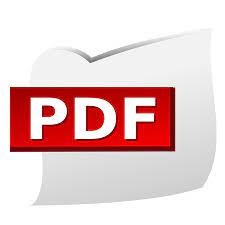Businesses and individuals need to protect PDFs and secure PDFs often since PDF files can sometimes be used to collect and send private, confidential information. One of the most popular and effective methods to protect PDF files from unauthorized access or modifications is by using password protection. By implementing password protection, you can safeguard your confidential information and maintain control over your PDF files. This article will detail all the ways to discuss the process of password-protecting PDFs and delve into additional features and best practices for enhancing the security of your PDF documents.
Why Do I Need to Protect PDFs?
PDFs are often the way companies, individuals and organizations organize and communicate vital information as well as share documents. However, this is a double-edged sword as PDFs are the ideal way to archive and share data because of their portability and versatility. However, it is crucial to protect sensitive PDF files from unauthorized access or modifications for these reasons because of their widespread use.
By password-protecting your PDFs, you prevent unauthorized alterations, edits, or deletions. This ensures that no one can change your documents, safeguarding them from tampering or modifications. Additionally, many PDF editors allow you to add a password at various points of access so you can attach a password to open the file, make edits, or send it without entering the correct password.
Password protection ensures that only authorized individuals with the correct password can access the content of your PDF files. This prevents any unwelcome users from viewing or extracting sensitive information, maintaining the confidentiality and security of your data. Password protection allows you to control who can access your PDF files. By setting a password, you can limit access to specific individuals or groups, granting permissions only to those who require it.
How do I Protect PDFs?
Password-protecting your PDF files is a straightforward process. The way you can add password PDF or other encryption features depends on the secure PDF tool that you use. Various programs let you add security features at multiple stages of creation or even after you create the file, so you can even secure PDF after you have created it or when it is fully complete. The PDF password programs that you can use include Adobe Acrobat, SmallPDF, or online platforms like Soda PDF or PDF Candy.
But whatever tool you decide to use, there are a few similarities between the various ways you can add passwords to PDFs. In general, you need to first open the PDF file you want to password-protect. Most tools allow you to drag and drop the file or use the “Open” function to import the PDF. You can variously locate the security settings or encryption options within the chosen tool. Often, these features will be like “Protect” or “Secure” to access password protection settings.
What are the Other Ways to Protect PDFs?
You can also use digital signatures to verify the authenticity and integrity of your PDF files. Digital signatures provide an added layer of security so recipients located anywhere can use them to validate the document or confirm its origin from a trusted source and is authentic and not a counterfeit. If you need to share PDF files with sensitive information, many password PDF tools use redaction software to permanently remove or hide confidential content. This ensures that sensitive data cannot be accessed or viewed, even by those with the correct password.
But one more way that you can ensure your documents are kept safe is by adding watermarks to your PDF files to deter unauthorized sharing or copying. Watermarks can be customized to include text, logos, or images, making it clear that the document is confidential or restricted, similar to the way photo archives and other official sources protect their content.
Securing your PDF files with password protection is a crucial step in safeguarding sensitive information and maintaining document integrity. By following the steps outlined in this blog post, you can effectively protect your PDFs from unauthorized access or modifications. Additionally, implementing additional features such as digital signatures, watermarks, and redaction can further enhance the security of your PDF documents. By prioritizing PDF security, you can have peace of mind knowing that your confidential information is well-protected.

